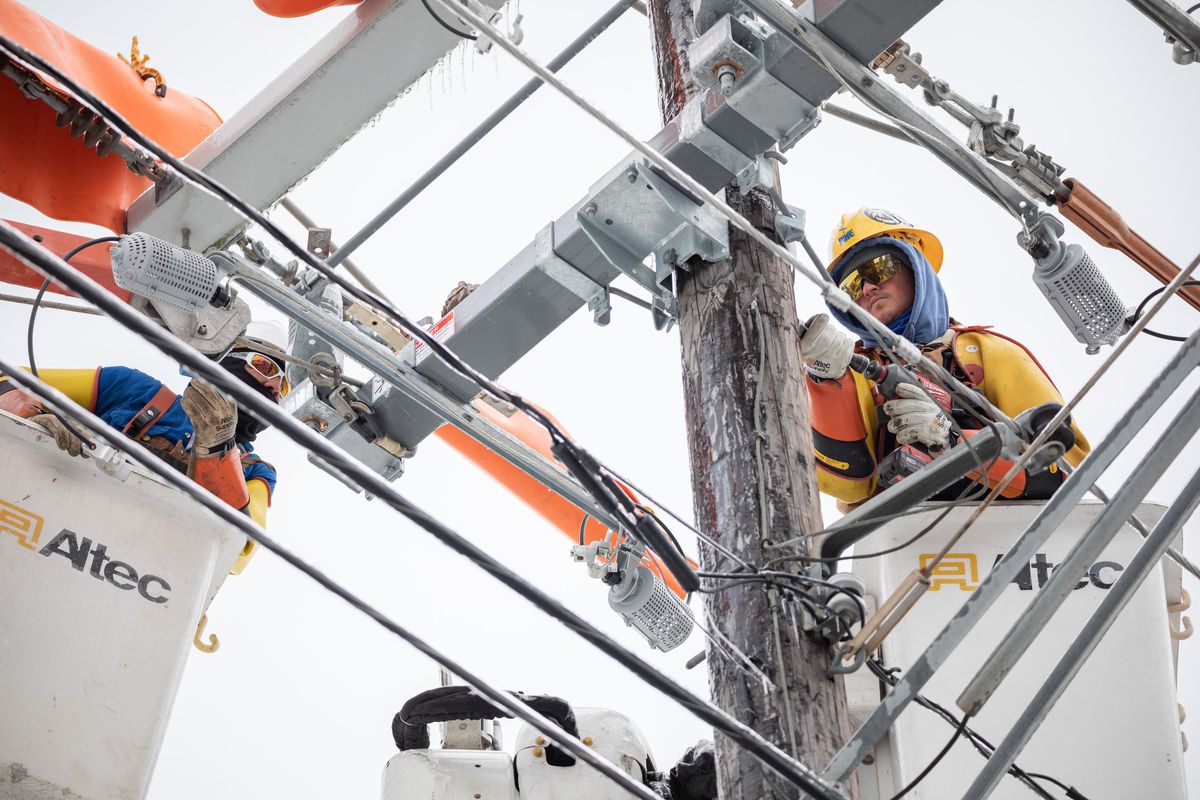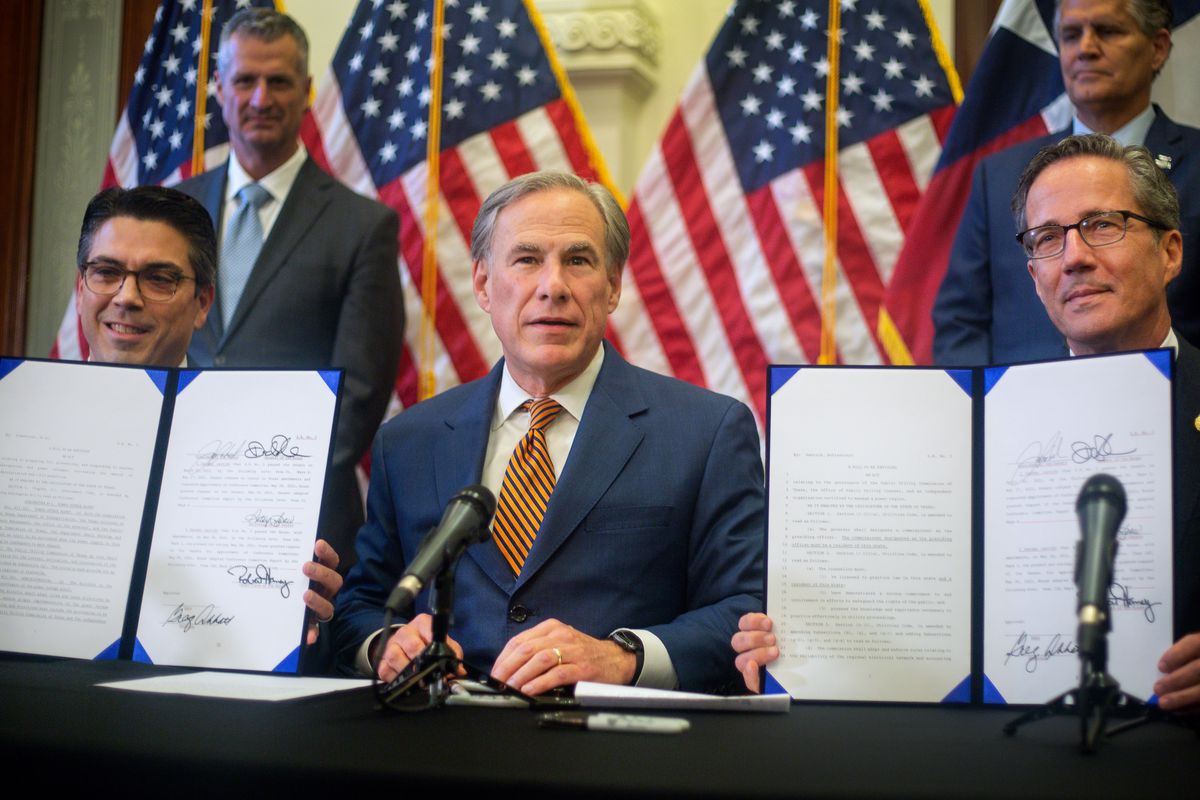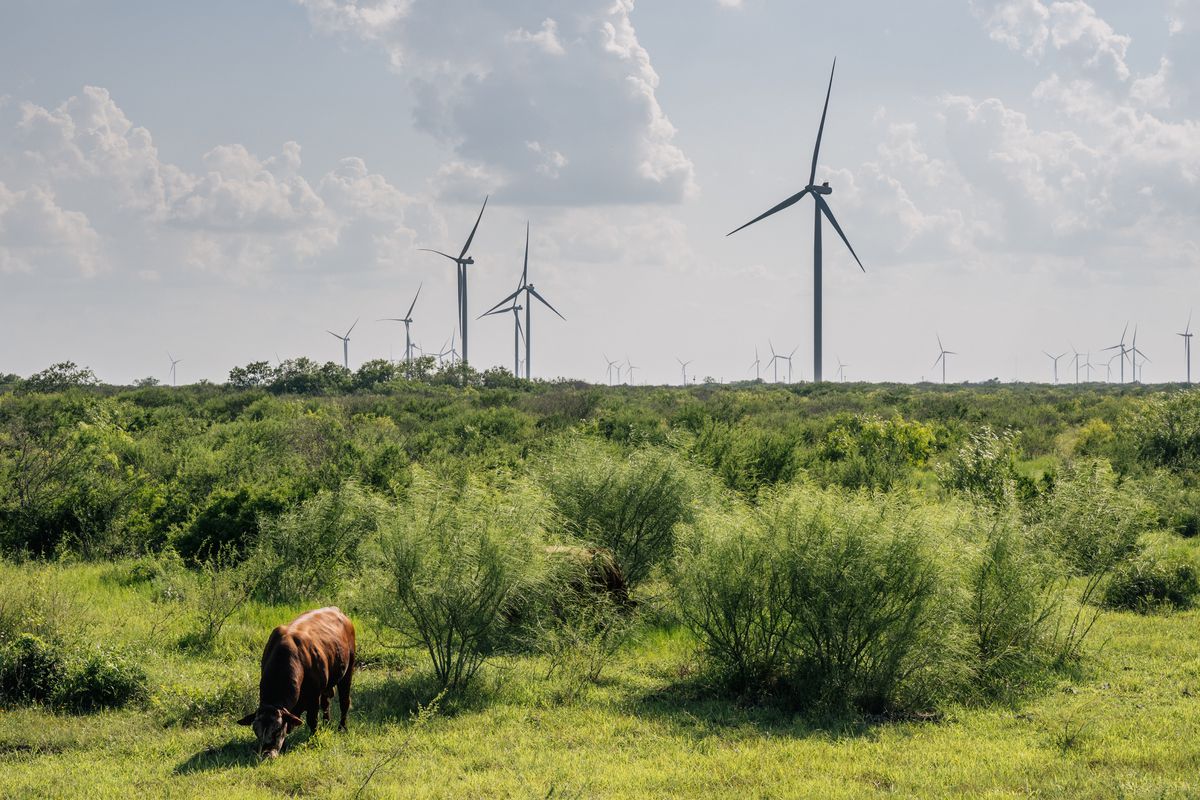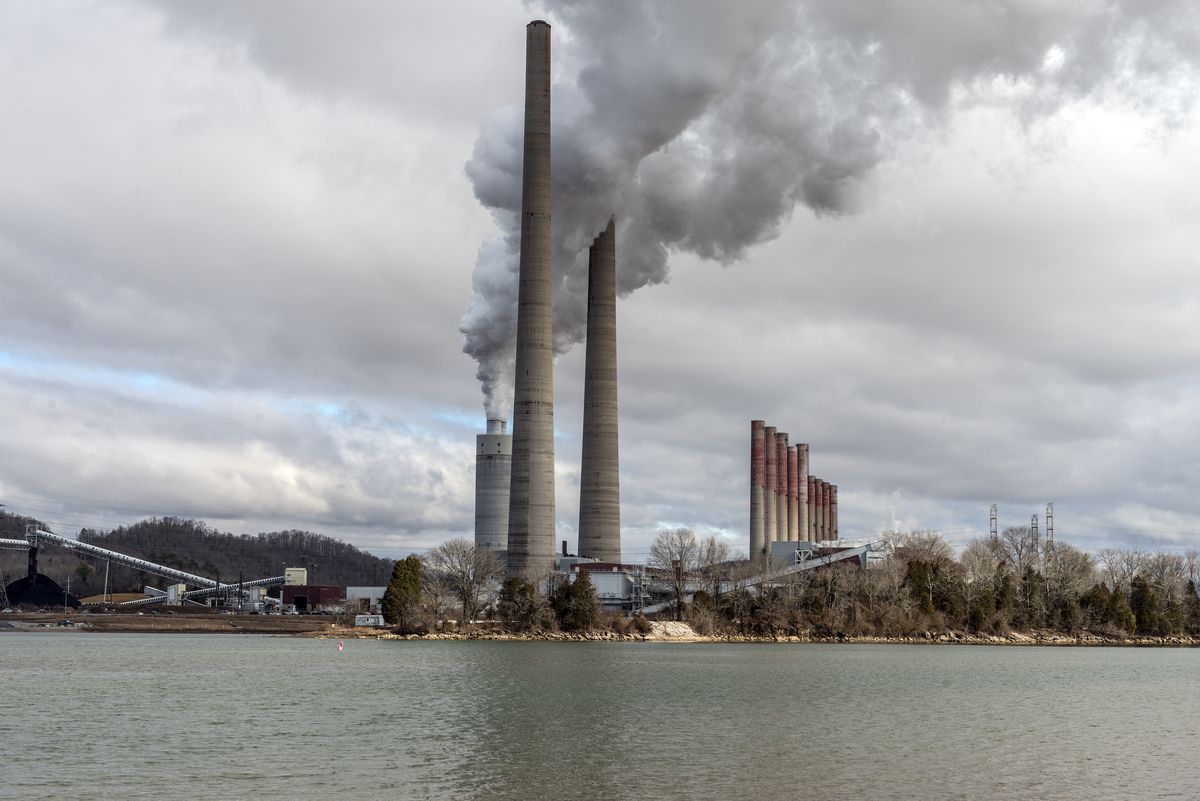According to the calendar, it’s not yet summer in the Northern Hemisphere. But in many parts of the world, the weather would indicate otherwise. A crippling heat wave created the hottest spring on record in India and Pakistan. Europe saw a heat wave of its own in May, with the temperature reaching historic highs across the continent. And in the United States? Surprise: unprecedented heat wave! Dozens of states saw spring temperatures at the highest they’ve ever been. In Texas, the heat was bad enough to knock six power plants offline, forcing state regulators to ask residents to help avoid a blackout by turning up their thermostats.
So, how about that weather?
The culprit is pretty clear. Recent research has shown climate change made the South Asian heat wave 30 times more likely to happen, and it’s very likely the same will be true for the European and American heat waves. The peak of summer could be even worse. The National Oceanic and Atmospheric Administration (NOAA) predicts above-average temperatures in June, July, and August for most of the lower 48.
Texas may be the most vulnerable of those 48. Most states in the continental US are connected to power grids that sprawl across state (and at times even international) lines. But Texas is, somewhat infamously, an energy island: It operates a power grid that’s mostly disconnected from the rest of the country. Depending on whom you ask, this has its advantages and disadvantages. Keeping the Texas grid disconnected from the rest of the country means it won’t fall under federal regulations, as grids that cross state lines do. But it also means Texas can’t borrow power from other states when its power infrastructure fails, as it did in February 2021 when Winter Storm Uri hit, knocking out power across the state for days. Hundreds of people died as a result.
Experts are worried something similar could happen this summer. Electricity use tends to peak in the summer in most of the United States, when people crank up their air conditioners. As rising temperatures force people inside for longer stretches of time, and as ACs work harder against more punishing heat, the American grid — which already isn’t prepared for climate change — will be pushed to its breaking point trying to keep up with energy demand. This May, the North American Electric Reliability Corporation announced that several parts of North America are at “elevated or high risk” of blackouts, thanks to the deadly combination of heat and a historic drought in the West. In California, officials warned that climate change could cause blackouts in the state for the next five summers.
In the wake of Winter Storm Uri, many people — myself included — discussed infrastructural fixes that could help fix the Texas grid to prevent future blackouts. Mose Buchele, an energy and environmental reporter at KUT, the NPR affiliate in Austin, focused on something else in a recent investigation. The real problem with the Texas grid, Buchele found, isn’t just the state’s infrastructure. It’s also the system of which that infrastructure is a part. Buchele dove deep into the history of how the Texas grid came to be in The Disconnect: Power, Politics and the Texas Blackout, a podcast based on his findings.
I recently spoke to Buchele about how the Texas grid is set up to constantly teeter on the edge of failure, one misstep away from a blackout. Our conversation has been edited for length and clarity.
Neel Dhanesha
Table of Contents
- 1 Neel Dhanesha
- 2 Mose Buchele
- 3 Neel Dhanesha
- 4 Mose Buchele
- 5 Neel Dhanesha
- 6 Mose Buchele
- 7 Neel Dhanesha
- 8 Mose Buchele
- 9 Neel Dhanesha
- 10 Mose Buchele
- 11 Neel Dhanesha
- 12 Mose Buchele
- 13 Neel Dhanesha
- 14 Mose Buchele
- 15 Neel Dhanesha
- 16 Mose Buchele
- 17 Neel Dhanesha
- 18 Mose Buchele
- 19 Neel Dhanesha
- 20 Mose Buchele
- 21 Neel Dhanesha
- 22 Mose Buchele
- 23 Neel Dhanesha
- 24 Mose Buchele
- 25 Neel Dhanesha
- 26 Mose Buchele
In your podcast, you said something I found fascinating: that infrastructure was just one part of the cause of the blackouts last year. Instead, you pointed to the energy market in Texas and how it works. Why was that so important to you?
Mose Buchele
A little over 20 years ago, Texas deregulated its energy market. And Texas is not unique in that; deregulation obviously has been kind of the story of American policy for decades. And it came to the electricity market in Texas, as it did to other states. But in Texas, it took a form that we do not see anywhere else. Essentially, they created a competitive market where supply and demand are the rule of the day. There’s no one power company that you go to, like there is in a lot of the country. You get these competing electric providers. But the real thing that makes Texas unique is that it is what they call an “energy-only market.”
In other parts of the country, a power plant, also known as a generator, gets paid to be around in case they’re needed. But in Texas, in an attempt to create this kind of perfect competitive market, they said, “No, you’re only going to make money by selling electricity at the time that it is needed, at its time of use.” So our generators only make money selling power on the market.
When you take that approach and you couple it with the law of supply and demand, what you’re doing is you’re creating a system that is run on scarcity. The less electricity that is available, the more expensive it will be. So in our market, we created a system where power plant operators make their margins by relying on moments of extreme scarcity that will drive up the price of electricity. And this will be their big payday. These moments may only come a handful of times a year but this is where you make your money.
Proponents of this market said that it incentivizes efficiency. Like, you cut out all the fat, and you don’t have any electricity generators that are getting paid to just sit around. They would claim that that creates an efficient market. The reality, though, is that when you need extra power on hand, you have less of it available.

Neel Dhanesha
I think the way you described it in your show was that the lack of extra supply means the grid is constantly running on a knife’s edge.
Mose Buchele
One of the things that’s been really wild for me to see happen in the aftermath of the 2021 blackout is the rhetoric around this market. I’ve been an energy reporter for years and years, and the Texas system was always held up as a kind of point of pride by politicians in power and regulators and industry people. We had this unique thing that was uniquely Texan and had created this efficient market. And in the aftermath of the blackout, it didn’t take long for a lot of the same people to suddenly start saying, “Oh, we have a crisis-driven market. We need to overhaul this market, we need to reform things so that it is now more focused on reliability.”
They were making all these promises they were going to change things. But — and this is where it gets really kind of confounding — they wanted to change things without actually overhauling the system. So their argument is that we are keeping our unique energy-only market, but we are also going to provide greater reliability within that framework. But the question right now is like, how do you do that? Or even, can you do that? I’ve interviewed a lot of experts in the world of energy that just are not buying it right now.
Neel Dhanesha
Right, it seems hard to motivate people to build extra power generators if the market disincentivizes them. Maybe this is a dumb question, but are there backup power plants in Texas that could turn on in case of blackouts?
Mose Buchele
Not really the way you might be thinking of them. They have these things called peaker plants that only run when electricity is really really expensive because that’s the only time they can make a profit. A lot of times these are even still coal plants, and these power plants are getting old. It doesn’t make sense to keep these things shipshape for most of the year. But you could go out to some rickety old coal plant around mid-July and get it geared up for August, when you can reliably expect the price of electricity to spike to its cap. Then, you run that plant as hard as you can through those super hot months. You try to make a bunch of money, and then you basically shut it down again until the next August. I guess it’s backup power of a sort, but it’s market-driven.
There was a proposal in the last legislative session to actually create a fleet of natural gas power plants that would only run as we approached an energy emergency, kind of like a generator you keep in your garage and only run when the power goes out. But that didn’t go anywhere. It was expensive, and some people saw it as a kind of way of secretly reintroducing a regulated utility structure to Texas. This would have been a government-regulated fleet of power plants that would come and save the day when the system crashed. And I think that was probably kind of politically difficult to sell people on in Austin, at the legislature.

Neel Dhanesha
It almost sounds like part of the problem is that it would require acknowledging that something about the system itself is broken or at least prone to crashing.
Mose Buchele
Yes, and that really seems to be one of the big challenges for the officials that are trying to wrap their heads around this now. They need to say, “The old system was a failure and we’re fixing it,” without saying that it’s a failure and it needs fixing.
Neel Dhanesha
How do renewables fit into this picture, if they fit into the picture at all? I know that Texas is a big wind power hub. Would those turbines keep working during blackouts like the one in 2021?
Mose Buchele
Even before last year’s storm was over, the governor was trying to lay blame on renewables. And that was just not the case. The big blackout was the result of a massive failure, primarily with our natural gas fleet of power plants and the natural gas system more broadly speaking — the pipelines and the wells and everything.
That was an example of a political battle that’s been going on in Texas, as it has nationally, for a long time now. Renewable energy is kind of ascendant in Texas right now. We are the wind leader of the country, and I think we’re going to be the solar leader of the country in a short amount of time. Integrating those energy sources does pose challenges to the grid, it’s not something you can just flip a switch and not think about, because they are different forms of energy.
Neel Dhanesha
One of the issues you highlighted in The Disconnect was that natural gas infrastructure froze during Winter Storm Uri. Wouldn’t wind turbines or solar power help mitigate that problem?
Mose Buchele
It depends on who you talk to. If you talk to people who analyze the energy system, they will agree. But the opposition is not generally based on the research or on the science. This is a political battle. It’s kind of an extension of a fight between industries. The oil and gas industry has been the dominant industry in Texas for generations, and they have an incredible amount of power over state politicians. So I don’t know that you’re going to hear a lot of good-faith debate around this from Texas politicians right now.
Renewable energy sources have helped us in a lot of these energy scarcity events that we’ve seen recently. Just in this really hot spring, we’ve had solar power really, really help. And it was — just like in last year’s winter storm — natural gas power plants suddenly breaking down that put us close to a crisis. It had nothing to do with renewables. We have installed a really impressive amount of solar just in the last year since the February blackout. That really is going to be essential to keeping us from blackouts going through the summer, which a lot of people are worried about. We’re expecting a really hot, dry summer.

Neel Dhanesha
If cold was the issue during the blackouts last year, why is heat the issue right now? There’s a lot of talk about winterization of natural gas infrastructure in the wake of the winter storm in 2021. Does heat have a similar effect on infrastructure, or is it just about demand?
Mose Buchele
Energy use is primarily driven through residential heating and cooling. Our highest energy use days in Texas are typically in the summer, when it gets really, really, really hot. But likewise, in an event like the 2021 storm, it can skyrocket when it’s really, really cold. That’s because people are just desperately trying to heat and cool their houses.
In Texas, power plants are built kind of open-air because the real threat has always been overheating. That was one of the things that really got us during the freeze: These power plants had not been weatherized to withstand that type of cold. Likewise, as things heat up in the state, they need to start taking some of that insulation off and trying to make sure that these things can operate in hotter weather — and the weather is just getting hotter and hotter. We are in the middle of a historically hot May. It feels like summer here already, and in Texas, that means really, really hot. So there’s a lot of anxiety about what this summer is going to bring.
Neel Dhanesha
Are there other ways climate change is affecting the Texas grid, aside from people running their air conditioners more?
Mose Buchele
Power plants in Texas have historically relied on what they call “shoulder months” to do their maintenance. These are times in the spring and in the fall where the weather is mild in the state and we don’t need many power plants at the ready because people aren’t really using their air conditioning or heat that much. Climate change means that those times are much more limited and much less predictable.
This raises concerns that the state’s aging fleet of power plants are maybe being run too hard. For example, it was a political imperative through the winter that we not have another blackout and that required power generators to be at the ready at all times. That meant these plants didn’t have a chance to do regular maintenance. One of the plants that failed this month actually requested to shut down for maintenance, that request was denied, and then it broke down.

Neel Dhanesha
Now for the big question: What’s the fix?
Mose Buchele
There isn’t just one fix. There are a lot of different things put together that could really help the situation. I think the most obvious one — the one that you don’t have to be a grid engineer to understand — is increasing interconnections between Texas and other neighboring grids. I’ve read very convincing analyses that say that if we were better connected, we still would have had blackouts in 2021 but they would not have been nearly as catastrophic as they were. They would not have lasted as long because after day one, maybe day two, we could have started pulling more power from other states and gotten people’s lights back on faster, and the kind of intensity of that disaster could have been muted.
There’s virtually no appetite to do that, it seems, on the part of state regulators and political leaders, in part because that would open up the state to federal regulation, which is just a non-starter for them.
Neel Dhanesha
Beto O’Rourke, who’s running for Texas governor, recently tweeted about connecting Texas to the national grid, so it looks like there’s some support from Democrats.
Mose Buchele
Oh, yes. When I say political leaders I mean the Republican leadership, the people with the power right now.
Neel Dhanesha
Let’s say Texas did join one of the larger grids on the eastern or western interconnect. Texas generates a lot of energy, so I imagine it could potentially help other states when things are running smoothly. But would the other states be able to keep up with the sort of demand Texas would bring?
Mose Buchele
[Laughs] I’ve heard the argument that’s like, why would anyone want to link up with a basket case like the Texas grid? And the way that this would work would be that the power would first go closer to the source first if it was needed. You wouldn’t export power to Texas and leave people in the state of origin freezing.
The frustrating thing for a lot of people that I talk to is that we are a wind juggernaut, and we often have more wind power than we can use. We’re also in a part of the country where that power could be pushed out to answer the energy needs of other states. And people could make a ton of money in Texas by pushing that energy out when we don’t need it. The reluctance to do that seems to transcend economics because it is a huge business opportunity for the state that we’re passing up on.
Neel Dhanesha
Okay, so connecting Texas to the larger grid could help prevent blackouts and potentially even push more renewable energy out into the rest of the country. That’s the big one. Are there any other fixes that you would want to see?
Mose Buchele
I don’t want to be too techno-utopian about this, but investing in things like battery storage that would allow us to make renewable energy more dispatchable seems like a no-brainer. Building out solar is huge because we usually use the most electricity in the summer. And the conditions that drive that high energy use (i.e. the state being baked by the sun) are the exact same conditions that create a ton of solar electricity. So that seems like a pretty obvious one to try to meet that super-high demand.
Another thing is energy efficiency. The energy efficiency goals in Texas are lower than most other states, and increasing our energy efficiency goals and programs would really help with grid reliability, because it would decrease the spikes in demand. I’m thinking of everything from insulation to more efficient appliances to energy efficiency at power plants, because it takes so much energy to produce power or drill for oil. If you have a better-insulated home, you’re just not going to be running the AC the same amount even on a hot day, so in aggregate it can make a huge difference statewide. And it’s so much cheaper than anything else.
Neel Dhanesha
Who would pay for those sorts of improvements?
Mose Buchele
It’s tricky. I always wonder what the incentives are here, you know, because we have a system where people make money selling power. You have to imagine that there’s some opposition to efficiency, just in the name of profit.






